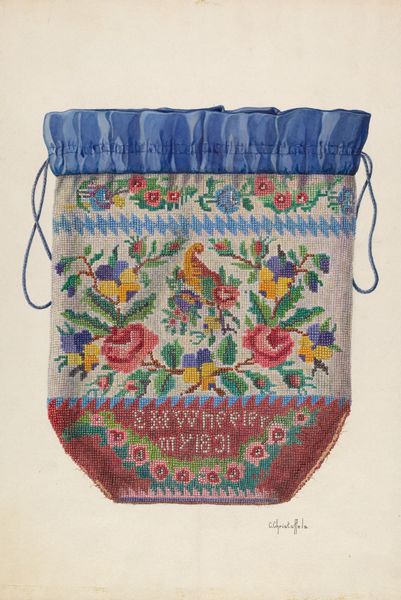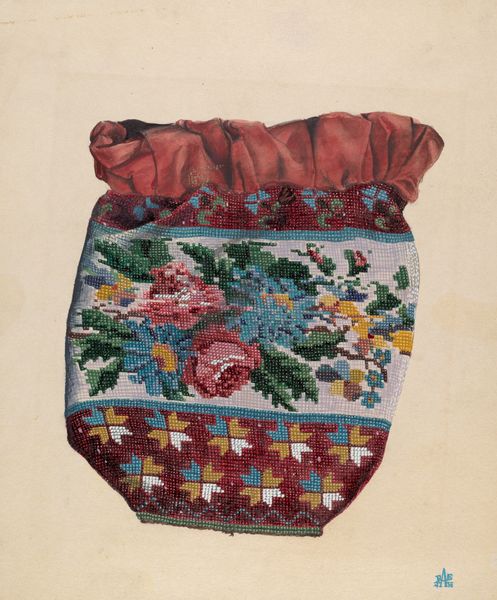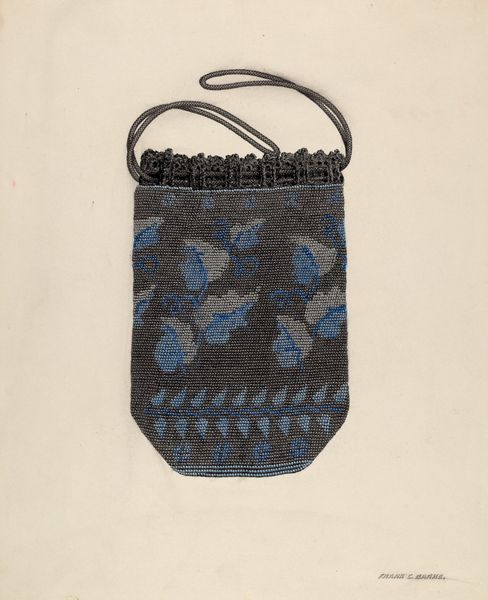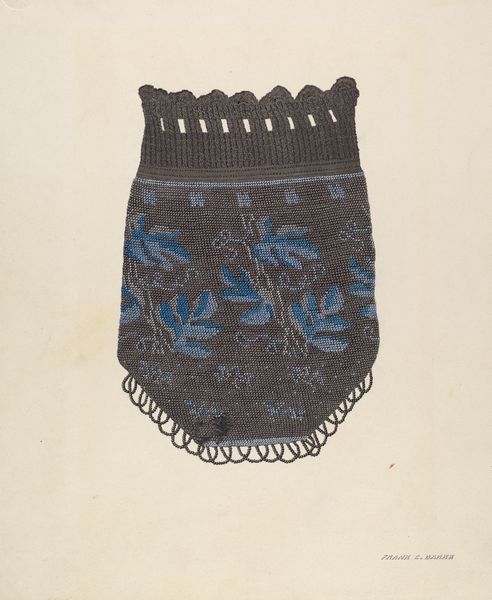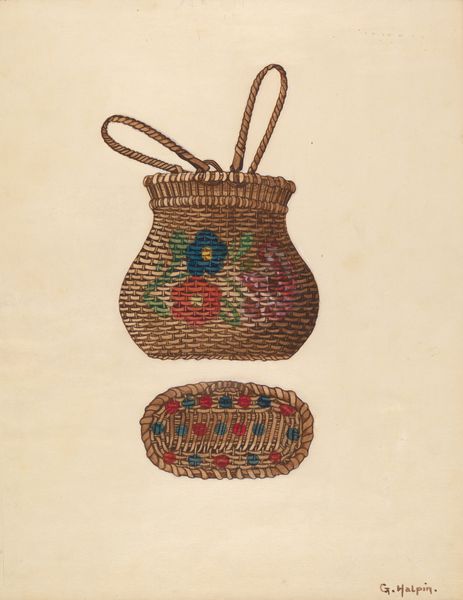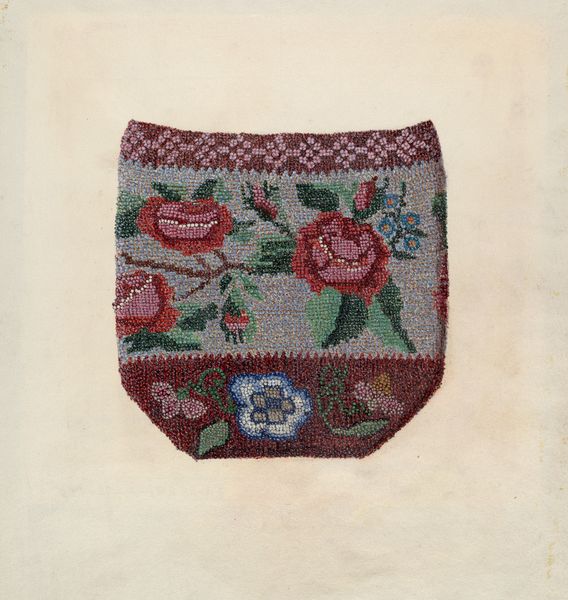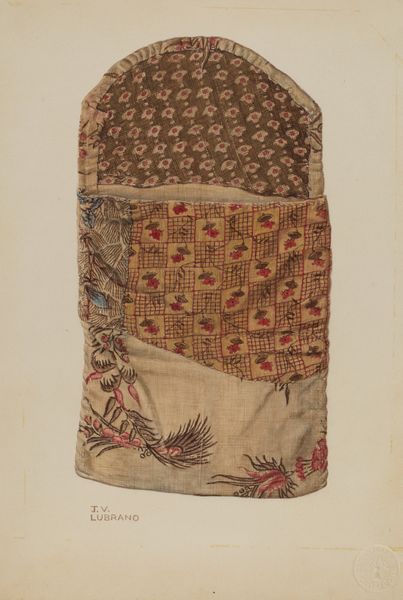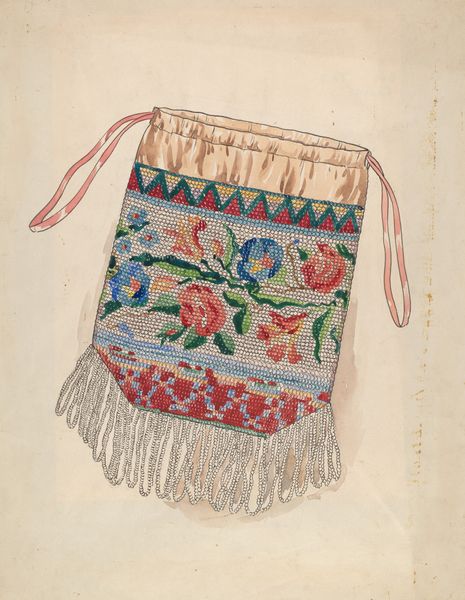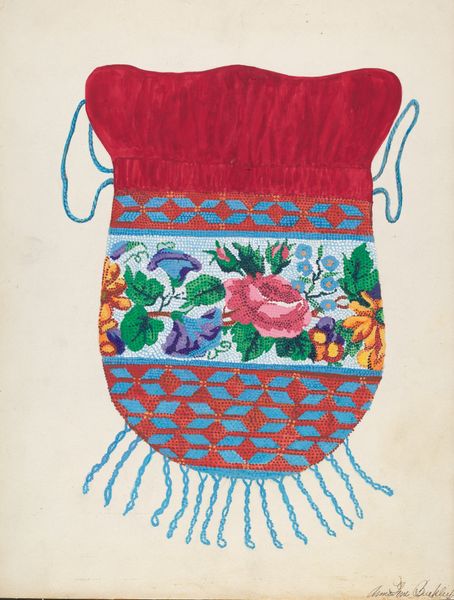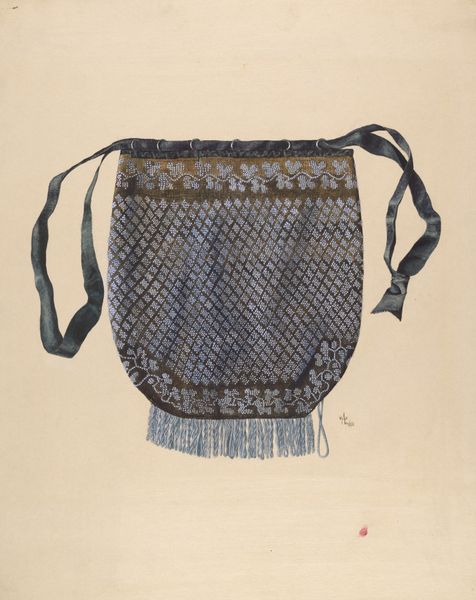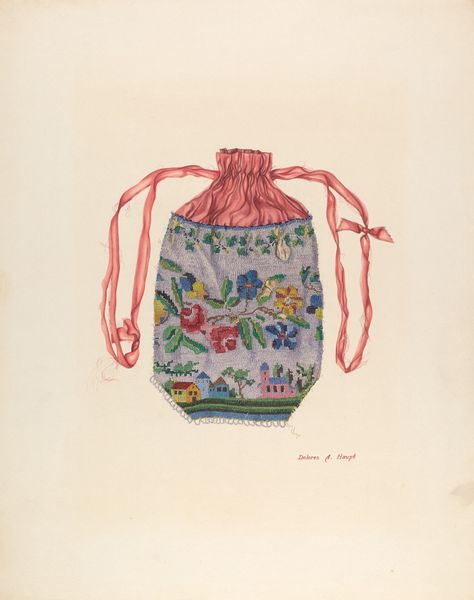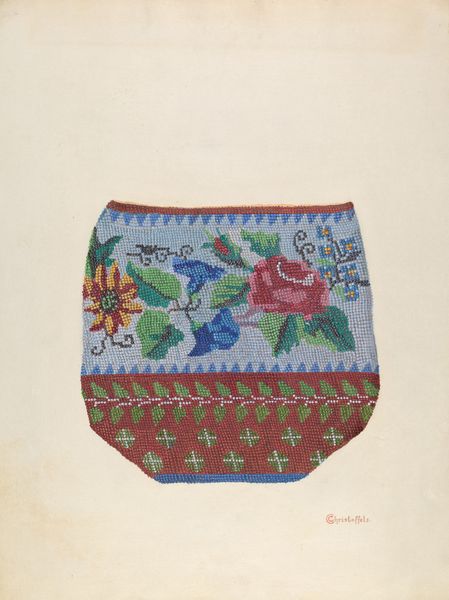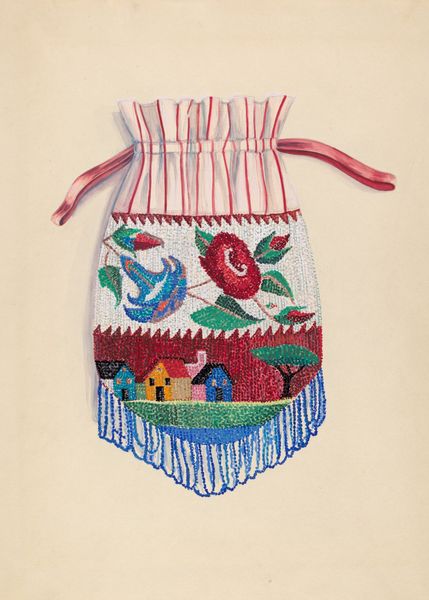
drawing, textile
#
drawing
#
textile
#
textile design
Dimensions: overall: 36 x 26.8 cm (14 3/16 x 10 9/16 in.)
Copyright: National Gallery of Art: CC0 1.0
Editor: This is "Bag," created around 1940 by Cornelius Christoffels, a design for a textile, perhaps for a small purse or pouch. I am struck by how the floral patterns, while colourful, are very formally arranged and restrained. What sort of symbols do you see at play here? Curator: The bag form itself, consider its historical symbolism. Bags have always been associated with personal identity – what we carry, what we value. The act of concealing and revealing becomes very potent. This particular design, with its floral motifs, whispers of femininity and domesticity, of course, a prevalent theme, and often a confinement, in the 1940s. Editor: Confinement? The colours seem cheerful. Curator: Indeed, but look closely at the arrangement. The geometric borders seem to almost contain the floral design, limiting its exuberance. The drawing flattens perspective – consider it almost a visual cage. Think about the wartime context. Could this cheerful facade mask a more anxious emotional landscape? What flowers resonate with you in this image? Editor: I’m drawn to the blue asters because they suggest enduring love or patience. I guess the bag holds secrets – literally and figuratively! It seems that the choice of the symbols is not as innocent as it seemed! Curator: Precisely! By understanding the symbolic weight of these details, we glean insights into the deeper currents of the time. What might the needleworker have felt as the stitches accumulated, with all the emotional baggage carried in them? Editor: It’s amazing how an everyday object can speak volumes about the historical moment. Curator: Yes, even seemingly decorative designs contain layered narratives – and encourage deeper interpretation. It’s all about peeling back the layers.
Comments
No comments
Be the first to comment and join the conversation on the ultimate creative platform.
